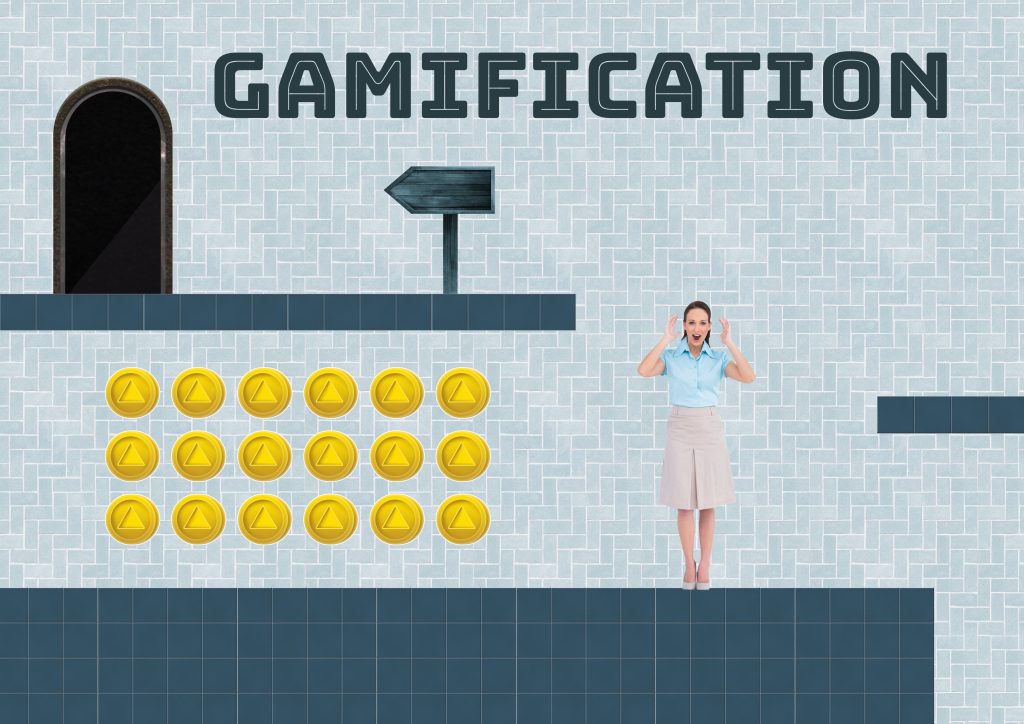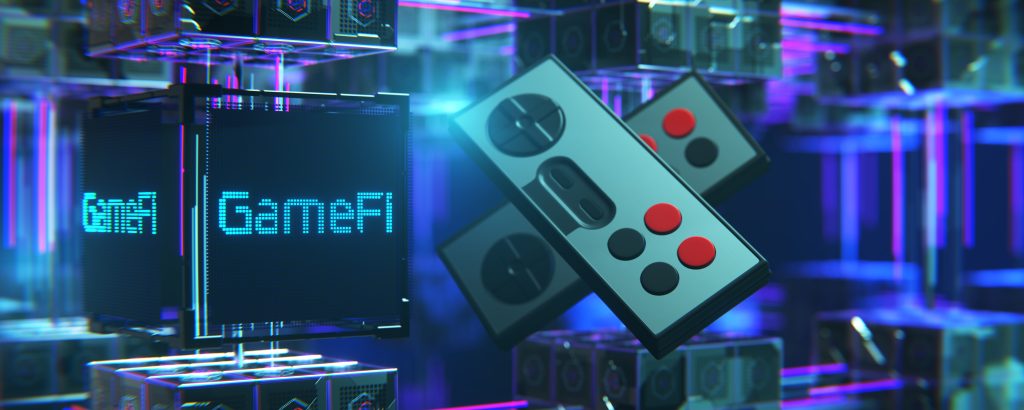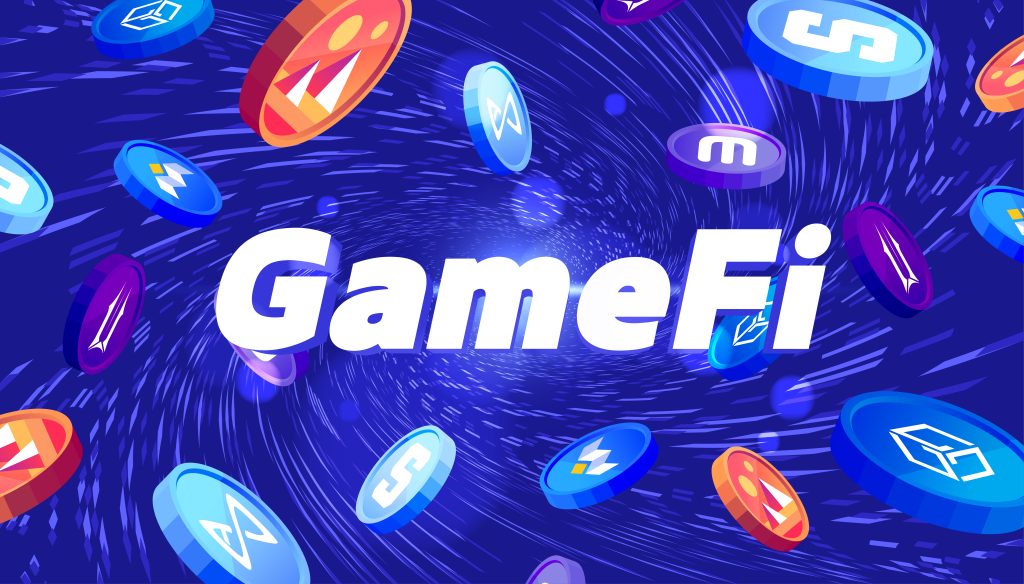Welcome to the thrilling world of GameFi, where the realms of gaming, finance, and blockchain technology merge to create an unprecedented form of entertainment. If you’re curious about what GameFi is, how it operates, and its potential impact on the gaming industry and beyond, you’ve come to the right place. We’ll delve into the core concepts of GameFi, explore its components, and discuss how it’s shaping the future of digital game experiences.
A New Era of Gaming and Economic Empowerment


The fusion of gaming and decentralized finance (DeFi) has given birth to GameFi, a groundbreaking ecosystem that empowers gamers to take control of their digital assets and earn tangible value. With its unique blend of entertainment and economic opportunities, GameFi is transforming the gaming landscape and offering a dynamic platform for players, developers, and investors alike.
Understanding GameFi: A Fusion of Gaming, Finance, and Blockchain
GameFi, a combination of the words “game” and “finance,” represents an innovative concept that integrates gaming, DeFi, and blockchain technology. By incorporating cryptocurrencies and non-fungible tokens (NFTs) into gaming experiences, GameFi allows players to participate in financial transactions, such as trading, staking, and earning rewards, while enjoying their favorite games.
◦ The Role of Blockchain in GameFi
Blockchain technology plays a crucial role in the GameFi ecosystem. It provides a decentralized and transparent platform for managing digital assets, executing transactions, and verifying ownership. This trustless infrastructure ensures security, fairness, and accessibility for gamers, developers, and other stakeholders in the GameFi space.
The Play-to-Earn Model: Revolutionizing Gaming and Beyond
The play-to-earn (P2E) model is a key component of GameFi, disrupting the traditional gaming industry by offering players the opportunity to generate income through their in-game activities. Unlike conventional pay-to-play and freemium models, P2E rewards players for their time, effort, and skills, enabling them to turn their digital achievements into real-world value.
➢ How Play-to-Earn Model Benefits Gamers
The P2E model presents several advantages for gamers, including:
- Financial incentives – Players can earn income by participating in GameFi projects, unlocking new revenue streams and turning their passion into profit.
- Asset ownership – Gamers have full control over their in-game assets, including characters, items, and virtual real estate, enabling them to trade or monetize these digital properties.
- Community engagement – Blockchain based games projects often emphasize community-driven governance and decision-making, allowing players to have a say in the development and direction of their favorite games.
➢ Play-to-Earn Model Attracting New Players and Investors
The P2E model is also attracting a growing number of investors and non-gamers who see value in the digital assets and economic opportunities presented by GameFi projects. As a result, GameFi is not only revolutionizing gaming but also expanding the market for digital assets and decentralized finance.
Popular GameFi Examples and Their Unique Features


Blockchain based games have gained significant traction and popularity in recent years, with various innovative titles offering unique gameplay and earning opportunities. Let’s explore some of these popular GameFi examples and their distinctive features.
‣ Dragonary: Engaging Gameplay Meets Cryptocurrency Rewards
Dragonary, is a popular example of a blockchain based game that combines captivating gameplay with cryptocurrency rewards. In Dragonary, players breed, collect, and battle dragons while earning CYT (Coinary Token), the game’s native cryptocurrency. This fun and immersive experience allows players to enjoy the game while simultaneously generating income through in-game activities.
‣ Axie Infinity: Pioneering Play-to-Earn Gaming
Axie Infinity is another noteworthy GameFi project that has set the stage for play-to-earn gaming. Players collect, breed, and battle fantasy creatures called Axies. By participating in battles, completing quests, and trading Axies, gamers can earn AXS and SLP tokens, which have real-world value and can be traded for other cryptocurrencies.
Digital Asset Ownership and NFTs in GameFi
One of the most significant aspects of GameFi is the incorporation of digital asset ownership, primarily through the use of non-fungible tokens (NFTs). NFTs have become an essential component of many GameFi projects, allowing gamers to own, trade, and monetize their in-game assets.
◇ The Role of NFTs in GameFi
NFTs represent unique digital assets with verified ownership and provenance, secured by blockchain technology. In the context of crypto based games, NFTs can take various forms, such as:
- In-game items (karts, weapons, armor, etc.)
- Collectible characters
- Virtual real estate
- Artwork
By tokenizing these digital assets as NFTs, players can own, trade, or sell them, creating a thriving in-game economy and opening up new financial opportunities for gamers.
DeFi Applications in GameFi Projects
The fusion of decentralized finance (DeFi) and gaming in GameFi projects creates a multitude of opportunities for players to interact with financial tools and applications while enjoying their favorite games. Here are some key DeFi applications in the GameFi ecosystem:
Yield Farming
Yield farming is a popular DeFi application that allows players to earn rewards by staking their cryptocurrencies or NFTs in liquidity pools or lending protocols. GameFi projects often incorporate yield farming opportunities, enabling gamers to generate passive income with their in-game assets.
Token Staking
Token staking is another DeFi application commonly found in GameFi projects. Players can stake their native tokens or other cryptocurrencies to earn rewards, such as additional tokens or in-game items. Staking incentivizes players to hold onto their tokens, promoting a stable and robust in-game economy.
Decentralized Exchanges and Trading Platforms
GameFi projects often incorporate decentralized exchanges (DEXs) and trading platforms to facilitate the buying, selling, and trading of in-game assets, including NFTs and cryptocurrencies. These decentralized platforms provide a secure, transparent, and accessible marketplace for gamers to transact and engage with the game’s economy.
Comparing GameFi to Traditional Video Games


GameFi projects stand out from traditional video games in several key aspects, with the most significant difference being the incorporation of blockchain technology, financial incentives, and digital asset ownership. Let’s dive into the main distinctions between blockchain based games and traditional video games.
⁍ Monetization and Play-to-Earn Models
While traditional video games typically involve one-time purchases, subscriptions, or in-game microtransactions as revenue sources, GameFi projects offer players the opportunity to earn through in-game activities, such as battles, quests, or trading. This play-to-earn model is a game-changer, allowing players to generate income while enjoying their favorite games.
⁍ Digital Asset Ownership
Traditional video games often have strict limitations on asset ownership, with players having little to no control over their in-game items. In contrast, GameFi projects emphasize digital asset ownership, primarily through NFTs. Players can own, trade, and monetize their in-game assets, fostering a thriving economy and opening up new financial opportunities.
⁍ Decentralization and Community Governance
GameFi projects often leverage decentralized and community-driven governance models, allowing players to have a say in the game’s development and direction. This is a stark contrast to traditional video games, where decision-making typically resides with a centralized entity, such as the game developer or publisher.
Getting Started with GameFi Games
If you’re interested in exploring the world of GameFi, here’s a step-by-step guide to getting started:
- Research GameFi projects: Begin by researching various GameFi projects to find a game that aligns with your interests and preferences. Look for popular titles, unique features, and strong communities.
- Set up a cryptocurrency wallet: To interact with GameFi projects, you’ll need a cryptocurrency wallet that supports the game’s native token and blockchain. Popular options include MetaMask, Trust Wallet, and Coinbase Wallet.
- Acquire the game’s native token: Purchase the game’s native token on a cryptocurrency exchange or decentralized exchange (DEX) to participate in in-game activities and earn rewards.
- Create an account and join the game: Follow the game’s onboarding process to create an account, link your cryptocurrency wallet, and start playing.
- Participate in in-game activities: Immerse yourself in the game by participating in battles, quests, or trading. As you play, you’ll earn in-game rewards and potentially generate income through the play-to-earn model.
The Future of GameFi and Its Impact on the Gaming Industry
The GameFi industry is poised for significant growth, with experts predicting it to revolutionize the gaming world. The integration of blockchain technology, decentralized finance, and NFTs will give rise to innovative gaming experiences and new monetization models, ultimately changing the way gamers and developers interact. Players will enjoy more control over their digital assets, and developers will have access to alternative funding sources through DeFi platforms.
As GameFi continues to evolve, the gaming landscape will shift from a closed, centralized model to a more open, decentralized one. This change will empower players and developers, fostering the creation of a dynamic gaming ecosystem where everyone can benefit. GameFi’s impact on the industry will be far-reaching, and it is poised to become an essential part of the future of gaming.









